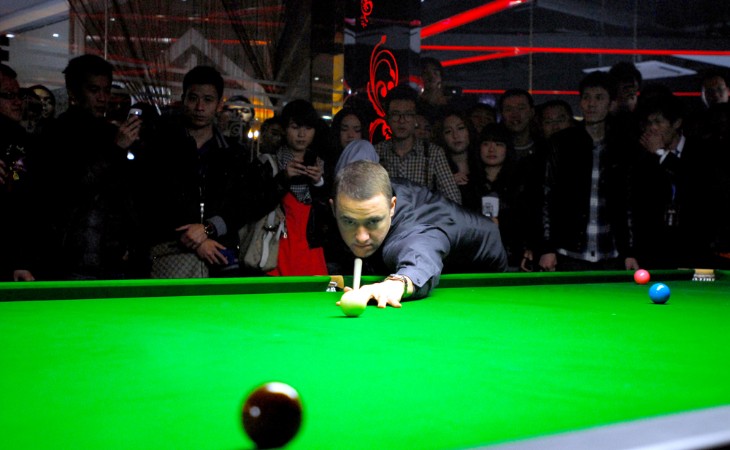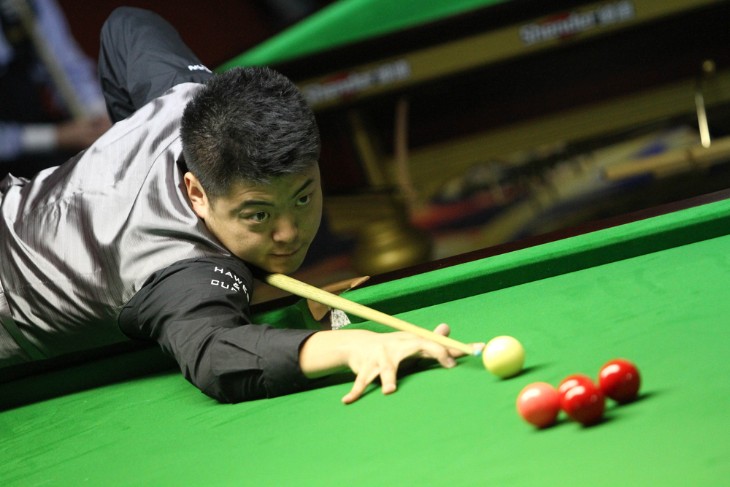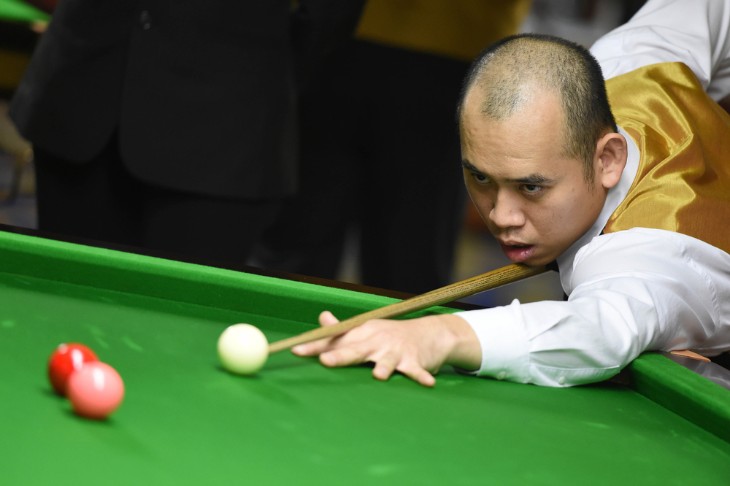- What Makes Left-Handed Players Special?
- Mark Williams: The Welsh Potting Machine
- Neil Robertson: The Thunder from Down Under
- Judd Trump: The Ace in the Pack
- Mark Allen: The Pistol from Northern Ireland
- Jack Lisowski: The Rising Star
- Jimmy White: The People’s Champion
- Other Notable Left-Handed Players
- Final Takeaway
In the dynamic world of snooker, left-handed players have carved a niche, showcasing exceptional talent and offering a fresh perspective on the game. Their unique approach not only adds diversity but also enriches the sport's competitive landscape. This article delves into the profiles of prominent left-handed snooker players as of 2024, examining their achievements and the distinctive flair they bring to the table.
What Makes Left-Handed Players Special?
Left-handed players bring a distinctive flair and advantage to snooker, setting them apart from their right-handed counterparts. Here’s what makes them unique:
- Unique Shot Angles: Left-handed players approach the game from a different perspective, often using angles and shot lines that right-handed players might find unconventional or challenging to anticipate.
- Strategic Diversity: Their playing style can disrupt opponents' strategies, forcing them to adapt to scenarios they may not encounter often.
- Easier Reach on Certain Shots: Left-handed players have a natural advantage in executing shots that require awkward positioning for right-handed players, reducing the need for extensions or rest tools.
- Unpredictable Play Style: The rarity of left-handed players at the professional level means their playing methods and decisions often stand out, adding an element of surprise to their matches.
- Broadens Snooker’s Appeal: Their presence in the sport showcases diversity in playing styles, which makes the game more intriguing and dynamic for fans and players alike.
Mark Williams: The Welsh Potting Machine
Mark Williams is one of the most celebrated left-handed players in the history of snooker. Known as "The Welsh Potting Machine," his career is a testament to consistency, determination, and an unshakable calm under pressure. Hailing from Cwm, Wales, Williams has been a dominant figure in the sport for decades, earning a reputation as one of snooker’s all-time greats.
Williams made history by becoming the first left-handed player to win the World Snooker Championship, achieving this remarkable feat in 2000. His victory not only marked a turning point in his career but also helped redefine perceptions of left-handed players in a predominantly right-handed sport. He followed this triumph with two more world titles in 2003 and 2018, cementing his legacy.
One of his standout qualities is his exceptional long potting ability. Williams’ precision in long-range shots often leaves opponents scrambling, turning the tables in high-stakes matches. Over the course of his illustrious career, he has compiled more than 600 century breaks, a testament to his skill and endurance.
Despite the evolution of snooker into a faster and more aggressive game, Williams’ ability to adapt and compete at the highest levels remains unparalleled. His calm demeanor, tactical acumen, and unmatched experience make him a formidable opponent, even against younger competitors.

Neil Robertson: The Thunder from Down Under
Neil Robertson, affectionately known as "The Thunder from Down Under," is one of snooker’s brightest stars and a beacon of success for left-handed players. Hailing from Melbourne, Australia, Robertson has achieved a level of excellence that has earned him a place among the sport's legends.
Robertson’s crowning achievement came in 2010 when he became the World Snooker Champion, making history as the first Australian to claim the title. This victory not only solidified his standing in the snooker world but also proved that left-handed players could dominate the sport's grandest stage. His career includes multiple Triple Crown event wins, showcasing his ability to perform under pressure on the biggest occasions.
One of Robertson’s most remarkable feats is achieving 100 centuries in a single season during the 2013–14 campaign, a record that stands as a benchmark of consistency and break-building prowess. His career tally boasts over 950 century breaks, including five maximum 147 breaks, underscoring his exceptional skill and precision.
Known for his methodical approach and clinical execution, Robertson is a player who thrives on the balance between offense and defense. His dedication to the sport and his ability to adapt to the evolving game have made him one of the most consistent and respected figures on the professional circuit.
Judd Trump: The Ace in the Pack
Judd Trump, famously nicknamed "The Ace in the Pack," is a left-handed snooker phenomenon who has redefined the sport with his innovative and attacking style of play. Born in Bristol, England, Trump has become one of the most recognizable faces in the game, captivating audiences with his flair and audacity at the table.
Trump’s breakthrough moment came in 2019 when he secured his first World Championship title, defeating John Higgins in a breathtaking final. This victory marked the pinnacle of a career filled with highlights, solidifying his status as one of the sport's elite players. Beyond the World Championship, Trump has won numerous ranking events, adding to his reputation as a consistent force on the circuit.
Known for his creative shot-making and fearless approach, Trump has brought a new level of excitement to snooker. His ability to execute stunning pots from seemingly impossible angles has earned him a loyal fanbase and the admiration of his peers. Over the years, he has amassed over 800 century breaks, a testament to his offensive prowess and ability to sustain long runs of form.
Off the table, Trump has been influential in modernizing the image of snooker. With his stylish persona and engaging presence, he has helped attract a younger audience to the sport, ensuring its continued growth and appeal. His dedication to evolving his game and pushing the boundaries of what is possible keeps him at the forefront of snooker innovation.
Mark Allen: The Pistol from Northern Ireland
Mark Allen, often referred to as "The Pistol," is a left-handed powerhouse in the world of snooker, known for his tactical brilliance and unwavering determination. Hailing from Antrim, Northern Ireland, Allen has established himself as one of the most consistent and formidable players on the professional circuit.
Allen’s career highlights include winning the prestigious Masters title in 2018, a victory that demonstrated his ability to excel under the intense pressure of snooker’s Triple Crown events. Beyond the Masters, Allen has claimed numerous ranking titles, showcasing his ability to compete and win against the best in the sport.
What sets Allen apart is his exceptional break-building skill, combined with a sharp tactical mind. His ability to read the table and execute precise shots makes him a tough competitor for any opponent. Over his career, Allen has surpassed 500 century breaks, a remarkable milestone that underscores his consistency and talent.
Known for his mental fortitude, Allen has frequently displayed the resilience required to bounce back from setbacks, often turning challenging situations to his advantage. His performances in high-stakes matches have earned him a reputation as a player who thrives under pressure.
Jack Lisowski: The Rising Star
Jack Lisowski is one of snooker’s most exciting left-handed talents, renowned for his attacking style and natural flair at the table. Born in Cheltenham, England, Lisowski has quickly risen through the ranks to establish himself as a crowd favorite and a player with immense potential.
While Lisowski has yet to claim his first ranking title, he has been a six-time finalist in ranking events, consistently demonstrating his ability to compete at the highest level. His flowing and aggressive approach to the game, combined with his effortless cue action, has earned him widespread admiration among fans and peers alike.
Lisowski’s close friendship and practice partnership with Judd Trump have contributed significantly to his growth as a player. The two share a similar attacking mindset, and Lisowski’s style reflects a boldness and creativity that make him a joy to watch.
Off the table, Lisowski has also been an inspiration for his resilience in overcoming personal challenges. As a cancer survivor, he brings a unique perspective to the sport, embodying determination and perseverance. With his combination of talent and tenacity, Lisowski is widely regarded as one of the best players yet to secure a major breakthrough title.
Jimmy White: The People’s Champion
Jimmy White, affectionately known as "The People’s Champion," is a legendary figure in snooker and one of the sport’s most beloved left-handed players. Born in London, England, White’s charismatic personality and dazzling skills at the table have endeared him to fans around the globe.
Throughout his career, White has been a six-time finalist at the World Snooker Championship, a remarkable achievement that reflects his consistency and determination at the highest level of the sport. While the coveted World Championship title eluded him, his performances in these finals have cemented his legacy as one of the greats.
White’s natural talent and flair for the game have made him one of the most entertaining players to watch. His ability to pull off jaw-dropping shots and build breathtaking breaks earned him numerous titles, including 10 ranking event victories and countless non-ranking triumphs.
As the first left-handed player to record a maximum break at the World Championship, White showcased the unique skills and perspective that left-handed players bring to the game. Beyond his on-table achievements, his enduring popularity stems from his down-to-earth demeanor and his connection with fans.
Even as he continues to play competitively, White remains an ambassador for snooker, inspiring future generations and contributing to the sport’s global appeal.

Other Notable Left-Handed Players
While the likes of Mark Williams, Neil Robertson, and Jimmy White have taken the spotlight, many other left-handed players have made significant contributions to the world of snooker. These players, through their unique styles and accomplishments, have enriched the sport and demonstrated the versatility and talent of left-handed competitors.
Barry Hawkins
- A consistent top-16 player with multiple ranking event victories.
- Known for his calm demeanor and clinical break-building skills.
- Reached the final of the World Snooker Championship in 2013, showcasing his ability to perform under pressure.
Liang Wenbo
- A trailblazer for Chinese snooker, known for his aggressive playing style.
- Claimed his first ranking title at the 2016 English Open.
- A charismatic player with a flair for dramatic shots and exciting matches.
Liam Highfield
- A steady presence on the professional tour, with a solid all-around game.
- Recognized for his resilience and determination in an increasingly competitive field.
- Continues to make strides, consistently challenging higher-ranked opponents.
Thepchaiya Un-Nooh
- Hailed as one of the fastest players in snooker, with a rapid and exciting style.
- Winner of the 2019 Snooker Shoot Out and a constant crowd favorite.
- Renowned for his ability to pot quickly while maintaining precision and accuracy.
These players, while perhaps not as decorated as some of their peers, represent the depth of talent among left-handed competitors in snooker. Their contributions highlight the diversity and excitement left-handed players bring to the sport, ensuring its ongoing evolution and appeal.
Final Takeaway
Left-handed players have significantly enriched the snooker landscape, bringing unique styles and perspectives to the sport. Their contributions continue to inspire and elevate the game, ensuring a vibrant and diverse future for snooker enthusiasts worldwide.











